 1999 Daewoo Chairman (W124) Dimensions, Size & Specs
1999 Daewoo Chairman (W124) Dimensions, Size & SpecsMeasurements of the 1999 Daewoo Chairman, engineered for optimal performance and comfort
| Dimensions | |
|---|---|
| Length: | 5055 mm199.0 in16.6 ft |
| Width: | 1825 mm71.9 in6.0 ft |
| Height: | 1465 mm57.7 in4.8 ft |
| Trunk Capacity: | 500 liter17.7 cu ft |
| Weight Specifications | |
| Curb Weight: | 1735 kg3825 lbs |
| Maximal permitted Weight: | 2050 kg4519 lbs |
| Tire Specifications | |
| Tire Size: |
|
The Daewoo Chairman (W124), produced between 1998 and 2005, is a full-size sedan designed to balance luxury and practicality. Measuring 5055 mm (199 inches) in length, 1825 mm (71.9 inches) in width, and standing 1465 mm (57.7 inches) tall, this model offers a spacious yet streamlined profile suited for comfortable urban and highway driving. With a curb weight of 1735 kg (3825 lbs) and a maximum weight capacity of 2050 kg (4519 lbs), the Chairman provides a stable and solid driving experience. The luggage compartment boasts a generous 500 liters (17.7 cubic feet) of storage, making it suitable for longer trips or daily commuting needs. Equipped with 205/60 R16 tires, it ensures reliable traction and a smooth ride. This generation of the Daewoo Chairman exemplifies a blend of classic sedan elegance with practical dimensions and sufficient interior volume, making it a noteworthy contender in the luxury sedan segment during its production period.
Discover the standout features that make the 1999 Daewoo Chairman a leader in its class
Have a question? Please check our knowledgebase first.
The Daewoo Chairman W124 generation, produced from 1998 to 2005, measures 5055 mm (198.8 inches) in length, 1825 mm (71.9 inches) in width, and 1465 mm (57.7 inches) in height. These dimensions reflect a sizable luxury sedan offering ample cabin and road presence. The length makes it a full-sized sedan suitable for comfortable rear seating and executive use, while the width provides a spacious interior for occupants. The height helps in maintaining a sleek yet stately profile typical for luxury vehicles from this period.
The Daewoo Chairman W124 has a curb weight of 1735 kg (3825 lbs) and a maximum weight of 2050 kg (4519 lbs). The curb weight represents the car’s weight with all standard equipment, fluids, and a full tank of fuel but no passengers or cargo. This weight impacts acceleration, braking, and fuel efficiency. A heavier vehicle generally means a smoother ride but can reduce agility. The maximum weight includes passengers and cargo and indicates the load the chassis and suspension can handle safely. The Chairman’s weight places it in the luxury sedan category where comfort and stability are prioritized, though it may not feel as nimble as lighter vehicles. Its weight distribution and suspension tuning aim to balance ride comfort with adequate road handling.
The Daewoo Chairman W124 offers a luggage capacity of 500 liters (approximately 17.7 cubic feet). This trunk volume is generous compared to many other luxury sedans of its era and class. The spacious boot can easily accommodate multiple suitcases, golf bags, or shopping bags, making it practical for long trips and daily use. The sedan design with a traditional trunk means that cargo is well protected from weather and theft compared to hatchbacks or SUVs, although it limits the ability to carry very tall or oversized items. Overall, the 500-liter capacity strikes a good balance between passenger comfort and utility.
The Daewoo Chairman W124 comes equipped with 205/60 R16 tires as standard. This means the tire width is 205 mm (8.07 inches), the aspect ratio (sidewall height as a percentage of width) is 60%, and the tires fit 16-inch diameter wheels. This tire size offers a good balance between comfort and road grip, which is typical for a luxury sedan focused on smooth and quiet ride quality. The relatively taller sidewalls help absorb road imperfections, enhancing passenger comfort, while the 16-inch wheels maintain good handling response without compromising ride softness.
With its length of 5055 mm (198.8 inches), width of 1825 mm (71.9 inches), and height of 1465 mm (57.7 inches), the Daewoo Chairman W124 will generally fit into a standard home garage, but it may be a tight fit depending on the garage dimensions. Typical single-car garages are about 6 meters (roughly 20 feet) long and 3 meters (close to 10 feet) wide, so the Chairman's dimensions fit within this, though maneuvering space around the vehicle might be limited. Homeowners considering this car should ensure the garage length is at least 5.5 meters to comfortably accommodate the vehicle plus room for opening doors and storage.
The Daewoo Chairman W124 replaced earlier Chairman models by Daewoo as the luxury sedan flagship from 1998 to 2005. Compared to its predecessor, this generation offered more modern design cues, refined dimensions, and advanced features suited to executive transport. The W124 maintained a full-size sedan footprint with a length over 5 meters and a wide cabin for comfort, but it included updated styling, improved interior materials, and enhanced ride quality. These changes aimed to position the Chairman more competitively against luxury sedans from Europe and Japan at the time, improving refinement and presence without drastically changing the overall size.
In the late 1990s and early 2000s luxury sedan market, the Daewoo Chairman W124 competed with models such as the Hyundai Equus, Lexus LS, and early BMW 7 Series. Size-wise, the Chairman was comparable, with its length around 5 meters making it a full-size sedan in its class. Its luggage capacity and interior spaciousness were competitive. However, the Chairman was often considered a more affordable alternative, offering many luxury features at a lower price point. While European and Japanese rivals might have had more advanced powertrains or brand prestige, the Chairman aimed to blend comfort, space, and value strongly.
The Daewoo Chairman W124's external dimensions (1825 mm wide and 1465 mm high) translate to a well-proportioned interior for a luxury sedan, offering comfortable legroom and headroom for front and rear passengers. While exact interior measurements are not typically detailed for this model, the vehicle’s generous length ensures ample rear cabin space, often a key feature for executive sedans. Passengers can expect sufficient headroom to prevent a cramped feeling, and the rear legroom would be adequate for taller adults, making it suitable for chauffeur-driven use. Additionally, the wide cabin contributes to shoulder space, enhancing overall passenger comfort.
The Chairman W124's curb weight of 1735 kg (3825 lbs) places it solidly within the weight range of premium full-size sedans from its era, balancing structural heft and luxury amenities. The maximum weight rating of 2050 kg (4519 lbs) indicates the car is designed to safely carry its full load of passengers and cargo without compromising performance or safety. Compared to competitors like the Lexus LS or BMW 7 Series, the Chairman is relatively comparable in mass, emphasizing smooth ride quality and solid road presence. This balance of weight ensures stability without excessive bulk that could negatively affect fuel efficiency.
The Daewoo Chairman W124 is well-suited for luxury executive transportation due to its full-size sedan dimensions and premium features. At over 5 meters in length and nearly 1.9 meters in width, it provides ample interior space for rear passengers, a critical factor for executive comfort. Its 500-liter luggage capacity also helps with business travel needs. The car’s design and ride quality emphasize comfort and smoothness, important for chauffeur-driven transport. While perhaps not as widely recognized as some European luxury brands, the Chairman offers a compelling blend of size, amenities, and comfort that fits well within the luxury executive vehicle segment of its time.
Discover similar sized cars.

| Production: | 1978-1987 |
|---|---|
| Model Year: | 1978 |
| Length: | 4978 mm196.0 in |
| Width: | 1806 mm71.1 in |
| Height: | 1407 mm55.4 in |
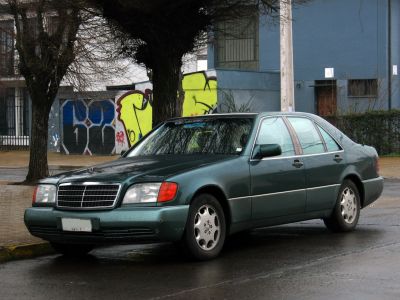
| Production: | 1991-1994 |
|---|---|
| Model Year: | 1991 |
| Length: | 5113 mm201.3 in |
| Width: | 1886 mm74.3 in |
| Height: | 1485-1495 mm58.5-58.9 in |
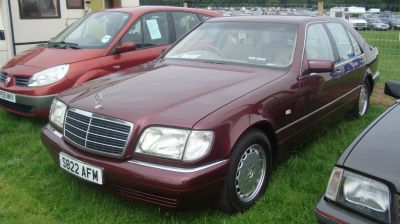
| Production: | 1994-1998 |
|---|---|
| Model Year: | 1994 |
| Length: | 5113 mm201.3 in |
| Width: | 1886 mm74.3 in |
| Height: | 1486 mm58.5 in |
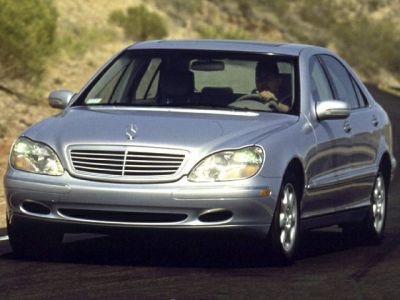
| Production: | 1998-2002 |
|---|---|
| Model Year: | 1998 |
| Length: | 5038 mm198.3 in |
| Width: | 2092 mm82.4 in |
| Height: | 1444 mm56.9 in |
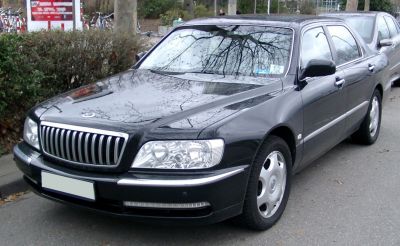
| Production: | 1999-2008 |
|---|---|
| Model Year: | 1999 |
| Length: | 5065 mm199.4 in |
| Width: | 1870 mm73.6 in |
| Height: | 1465 mm57.7 in |
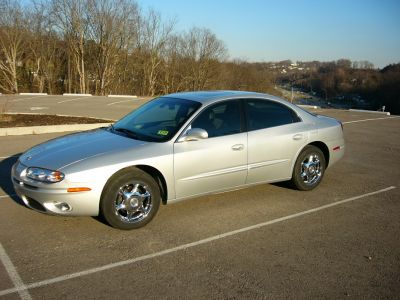
| Production: | 1999-2003 |
|---|---|
| Model Year: | 2001 |
| Length: | 5062 mm199.3 in |
| Width: | 1852 mm72.9 in |
| Height: | 1440 mm56.7 in |
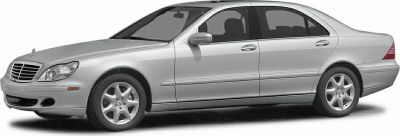
| Production: | 2002-2005 |
|---|---|
| Model Year: | 2003 |
| Length: | 5043 mm198.5 in |
| Width: | 2092 mm82.4 in |
| Height: | 1444 mm56.9 in |
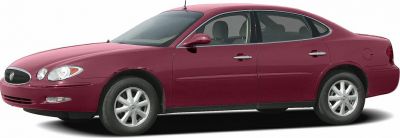
| Production: | 2004-2007 |
|---|---|
| Model Year: | 2005 |
| Length: | 5030 mm198.0 in |
| Width: | 1855 mm73.0 in |
| Height: | 1460 mm57.5 in |
